Dot Matrix Printers: Reliable Printing for Industrial and Business Applications
While modern inkjet and laser printers dominate homes and offices, dot matrix printers continue to hold a crucial place in industrial and commercial settings. Known for their rugged reliability, low operating costs, and ability to print on multi-part forms, these printers remain an essential tool for many businesses that require continuous and impact-based printing.
What Is a Dot Matrix Printer?
A dot matrix printer uses a print head that moves back and forth, striking an ink-soaked ribbon against the paper to form characters and images as a series of tiny dots. This impact printing technology allows dot matrix printers to create carbon copies and multi-layered forms — something inkjet and laser printers cannot do.
Key Features of Dot Matrix Printers:
-
Durable and Long-Lasting: Built for heavy-duty use in demanding work environments.
-
Continuous Paper Printing: Ideal for invoices, receipts, and multi-page forms.
-
Cost-Effective Operation: Low maintenance and affordable ribbon replacements.
-
Reliable in Harsh Environments: Works efficiently in areas with dust, humidity, or temperature variations.
-
Multi-Part Printing: Can print duplicate or triplicate copies in one go.
-
Simple Maintenance: Easy to service and repair compared to modern printers.
Common Uses of Dot Matrix Printers:
-
Banking and Finance: For check printing and transactional records.
-
Warehousing and Logistics: Used for invoices, shipment labels, and continuous reports.
-
Retail: Ideal for billing systems and receipt generation.
-
Government Offices: For form-based documentation and record keeping.
-
Industrial Settings: Performs reliably in harsh environments where inkjet or laser printers may fail.
Advantages of Dot Matrix Printers:
-
Highly economical for continuous printing.
-
Ability to print carbon copies or multi-layer forms.
-
Strong paper-handling capability for different paper types.
-
Long lifespan — many models operate for years with minimal issues.
-
Resistant to dust and temperature fluctuations.
Limitations:
While dot matrix printers offer unmatched durability, they are noisier and produce lower print resolution compared to modern printers. However, their functionality, reliability, and low running costs continue to make them indispensable in specific industries.
Conclusion:
Dot matrix printers may seem old-fashioned, but their durability, cost-efficiency, and ability to handle continuous and multi-part printing make them invaluable for businesses that rely on consistent, long-term output. From banking to logistics, they remain a trusted solution where performance and reliability matter most.








